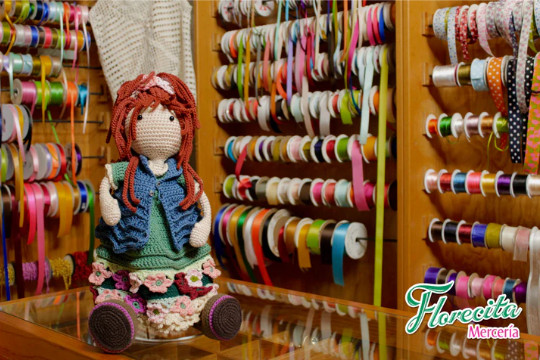If you’ve ever lived in Mexico or visited often, you’ve probably seen a mercería. It’s one of those small neighborhood stores where people go to buy thread, buttons, elastic, zippers, and all sorts of sewing and craft supplies. Some are tiny — like the size of a hallway — and others, like Mercería del Refugio in Mexico City, are really big and feel almost like a hobby store.
In the U.S., I’ve rarely seen anything quite like it. Maybe some shops in New York had something similar — I remember one run by Spanish immigrants in Manhattan — but most of the time, people here go to Joann Fabrics, Michael’s, or order things online. In English, you could call a mercería a “notions store” or use the word “haberdashery,” — Honestly, nobody really says that anymore, unless you’re in the sewing world.
What Do They Sell?
In a mercería you’ll usually find:
-
All kinds of threads, needles, buttons, beads, sequins.
-
Zippers, elastic bands, lace, and trimmings
-
Items for embroidery, crochet, or knitting
-
Supplies for school projects or DIY crafts
-
Sometimes baby clothes, handkerchiefs, or even lingerie accessories
What I find interesting is that mercerías are still around in Mexico, even with Amazon and big box stores. They’re part of the local life — you can walk down the street and find one that has exactly the color of ribbon or button you need, and someone behind the counter who knows their stuff.
A Big Example: Mercería del Refugio
One of the most famous mercerías in Mexico is Mercería del Refugio. They have locations in Mexico City and other cities, and people love them. They sell everything from embroidery supplies to crafts for kids. I’ve seen people go there for school projects, for handmade gifts, or just to pick up a few buttons or a spool of thread. It’s not a fancy place — it’s practical, and full of variety.
Also in Italy – Same Word, Same Type of Store
What’s interesting is that the word mercería exists not only in Spanish-speaking countries but also in Italy. In Italian, it’s spelled the same — merceria — and the meaning is very similar. It refers to small stores that sell sewing and knitting supplies, threads, buttons, and so on. Some Italian towns still have them, and just like in Mexico, they’re part of daily life, especially for older generations or people who love handmade crafts.
So mercería is one of those words that connects cultures — it shows how some everyday things travel across countries, even if they slowly disappear in others. According to the RAE dictionary, the word mercería comes from Catalán. This type of store also exists in France as mercerie.
So, Why Don’t We Have Many of Them in the U.S.?
Honestly, I don’t know. Maybe we used to, a long time ago. But here in the U.S., most people buy these things at big chains or online. Maybe it’s because fewer people sew or do crafts regularly, or because the smaller stores couldn’t compete with larger ones. Or maybe in big cities like New York or L.A., they still exist — just not under the name mercería.
I think it’s one of those little cultural differences that are easy to miss but say a lot. In Mexico or Italy, going to the mercería is just something you do. In the U.S., you plan a whole trip to Joann’s or hit “Buy Now” on Amazon.
If you’re learning Spanish, words like mercería are fun — because they don’t translate exactly. It’s not just a “store” — it’s a little part of neighborhood life that doesn’t exist the same way here.
🔗 Learn More About Mercerías (Spanish)
-
🔗 Mercería – Wikipedia (Spanish)
(Definition and overview of mercerías and their products) - 🔗 Mercería del Refugio Mexico – Facebook
(Official page of one of Mexico’s largest mercerías) -
🔗 Mercería Florecita Oaxaca, Mexico – Facebook
(Community page with updates, promotions, and customer interactions)




